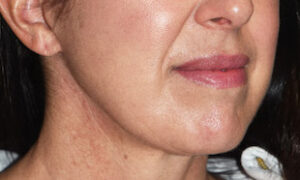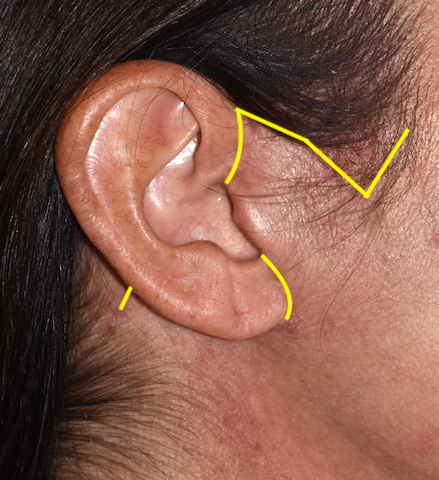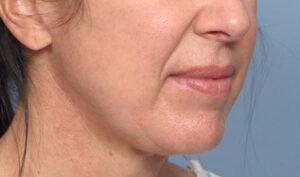The facelift is one of the most recognized facial plastic surgery procedures. Despite this public recognition it is also a facial rejuvenation procedure that is rife with many misconceptions about it. One of the most basic of those misconceptions is what it actually does or accomplishes. It primarily improves the lower third of the face, not the entire face, which is why it is can also be referred to as jowl-neck lift.
The jowl-neck lift has numerous techniques as to how it is performed. It is easy to get caught up (and confused) by technical maneuvers done in the procedure (e.g., SMAS flap) or in how it is marketed. It is better to think of it in levels or degrees of invasiveness based on what anatomic structures of the jawline and neck to be improved. Not surprisingly lower facelift levels are influenced by the amount of aging changes present.
The ‘entry’ level facelift (type 1) is often the most unrecognized. It is for the earliest signs of aging which include the presence of jowls/loose skin along the jawline and some mild central neck fullness. Its value is often overlooked because it competes with many non- or minimally invasive facial rejuvenation techniques such as skin tightening devices and various thread lift materials. The aesthetic improvements seen between a type 1 facelift and skin tightening/threadlifts are not comparable. But the latter has a role for those not ready to commit to a definitive surgical procedure, not because their degree of facial improvements is similar.

Facial skin flaps are widely raised into the neck and up to the nasolabial fold and mouth corners for maximal skin movement. A SMAS flap is raised, not SMAS imbrication or plication. This has a better tissue lifting effect.
The neck may or may not be treated as part of a jowl tuck up depending upon its central neck fullness for which liposuction is usually sufficient.


The type 1 facelift is for the younger patient, usually in their 30s and 40s with the onset of modest facial aging changes. It is also the basic techniques that is used for secondary facelifts to keep the original procedure looking fresh and maintained.
Dr. Barry Eppley
Indianapolis, Indiana




